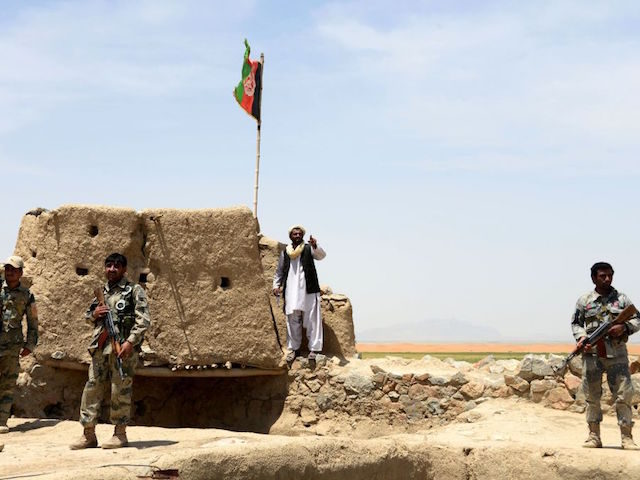The United States government has invested more than $160 million since 2009 on a failed program to combat the endemic corruption that continues to plague one of the largest revenue sources for the Afghan government, the cash-based system to collect customs duties on goods entering Afghanistan, reveals a U.S. watchdog agency.
For years, Afghanistan has failed to collect enough revenue to meet its budgetary obligations, relying heavily on donor support, primarily the United States, which alone has devoted an estimated $714 billion to the Afghan war since it began in October 2001.
In an August 2017 letter to the U.S. Agency for International Development (USAID), which has been charged with implementing an electronic payment system to collect customs duties efficiently, the Special Inspector General for Afghanistan Reconstruction (SIGAR) acknowledges, “The current cash-based payment system is inefficient, leaves customs brokers vulnerable to theft, and increases the opportunities for corruption to occur within the customs process.”
“To help combat the issues related to the endemic corruption that has plagued the Afghan government’s cash-based customs payment system,” former President Barack Obama’s USAID awarded the $161.6 million contract to Chemonics Inc. to implement an electronic payment system between 2009 and 2017.
Citing USAID officials, the inspector general indicates that employing an electronic payment system could potentially double the much-needed customs revenue remitted to the Afghan government by eliminating or significantly stemming corruption in the customs process.
“Improving the efficient and effective collection of customs duties is important to the government’s long-term sustainability,” points out SIGAR, acknowledging that the Afghan government has for years failed to collect enough revenue to pay for its expenses.
SIGAR attributes the lack of Afghan government revenue to cover the country’s budgetary obligations, in part, to the significant theft of custom duties, considered one of the largest funding sources for Kabul.
In 2015 alone, U.S. officials found that at the time “a large portion of the revenue decline then occurring could be attributed to concerns that approximately half of customs duties for Afghan FY 1393 (December 21, 2013 through December, 20, 2014) were believed to have been stolen,” reveals SIGAR.
Nevertheless, the U.S. government continues to invest in a USAID endeavor that appears to have no chance of achieving its intended goal — the effective implementation and use of the e-payment system for the collection of custom duties in Afghanistan.
“The [e-payment] system remains unimplemented at many locations and is unused at most of the locations where it has been implemented. Moreover, the goal of reaching 75 percent of customs duties collected through e-payment appears to have been totally unrealistic,” reports SIGAR.
Although the program is expected to collect 75 percent of all custom duties electronically by the end of November 2017, “our review found that by the end of December 2016, less than 1% (.59%) of all custom duty collections were being collected electronically,” adds the inspector general.
USAID reportedly conceded that it has failed to implement a system that allows for the electronic collection of customs duties.
SIGAR notes, “USAID agreed with our suggestion to hold Chemonics accountable to the terms of the contract and direct it to comprehensively assess the reasons why it failed to achieve the goals of the e-payment component, and stated that a ‘root cause analysis’ would be completed by August 31, 2017.”
The failed USAID program is a testament to the billions of dollars invested in Afghanistan that can be written off as fraud, waste, and abuse.
John Sopko, the chief of SIGAR, recently told lawmakers that the U.S. government had mismanaged so much money in Afghanistan, it is nearly impossible to estimate what percentage of the nearly $117 billion the United States has spent on reconstruction efforts can be deemed waste, fraud, and abuse.
In its August 17 letter to USAID, SIGAR noted that much of the more than $115 billion the United States had committed to Afghanistan as of the beginning of this year had been added to its High-Risk List of programs that Kabul is unable to sustain without “massive, continued donor” support.
“For example, Afghanistan’s projected domestic revenues for the current fiscal year [2017] are only expected to account for about 38 percent of the Afghan government’s budgeted costs, with donors (of which the U.S. government is the largest) providing the remaining 62 percent,” points out the inspector general.
“Improving the Afghan government’s ability to sustain itself with reduced donor support has been a key priority for both the U.S. government and international donors,” it also reports.

COMMENTS
Please let us know if you're having issues with commenting.